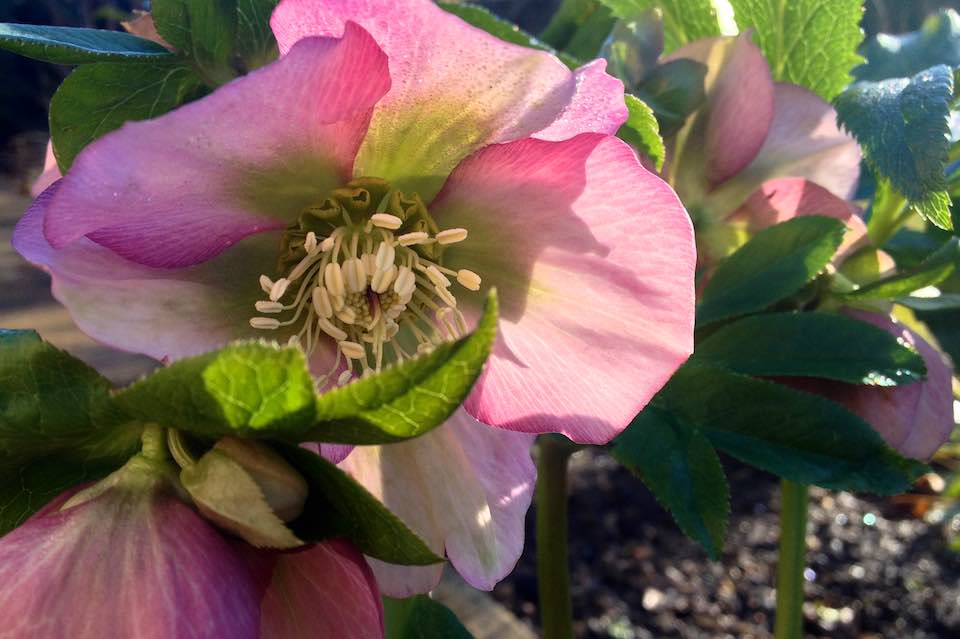Too small for little Red to lose her way, too narrow to hide Rapunzel in a tower, but big enough to be enchanting. Once a boldly neglected, small strip of garden right at the boundary’s edge, hidden amongst the towering tree canopies, is undergoing an exciting transformation. Forty years worth of bonfire remnants, staggeringly high piles of garden waste, an oasis of brambles, and mountains of discarded concrete blocks later has revealed, a potentially charming woodland garden.
Quite incredibly, and this is probably purely personal foolishness, but shade loving plants were never really on my radar – they were literally in the shade. Somehow, the appreciation of plants beyond the utopic ‘full sun, south facing’ aspect, seems a lesson learned over years of gardening experience. However, where previously overshadowed by their bolder, brasher cousins in the herbaceous borders, the woodlanders with their delicate foliage and flowers, are fast becoming stalwart favourites. Admittedly, the herbaceous borders will remain a firm focus, but the previously neglected umbrous parts of the garden are happily generating, just as much excitement and gratification, if not more.
Fortified forest
The woodland garden lies directly behind one of the outer garden walls, and borders a delightful English Heritage site. This site was held in the 11th century by Odo, Bishop of Bayeux, who is thought to have commissioned the famous Bayeux tapestry. No stonework is visible there above ground today, but the scale of the earthworks are impressive. The rampart which is fifteen metres high in places, reveals a sizeable enclosed area marking the site of the 11th century motte and bailey castle.
The rampart, which borders our tiny strip of woodland garden, is the home to mature decidious trees, mainly; Fagus sylvatica, Acer pseudoplatanus, Aesculus hippocastanum and Quercus Robur. Light permitting, Corylus avellana have squeezed their way through, providing that lovely gnarled understory. As mature trees, they’re of a considerable size but planted on a substantially high rampart, they’re humongous! Fortunately south facing, the sun is able to penetrate the canopy, revealing beautiful luminous displays through the translucent foliage.

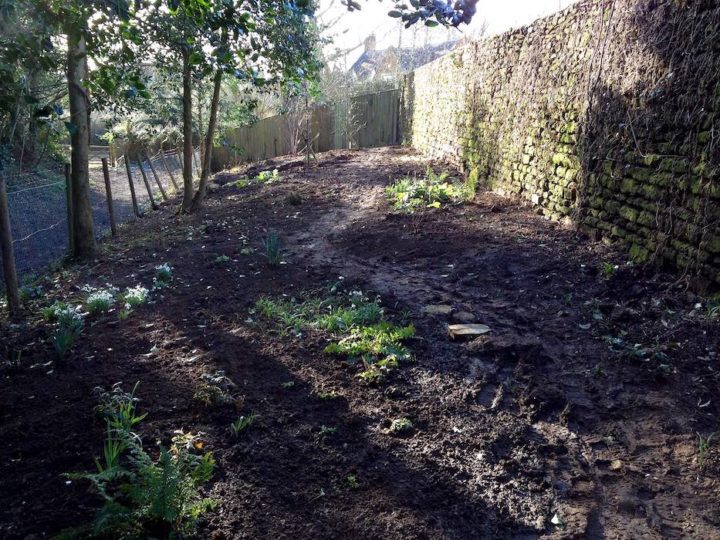
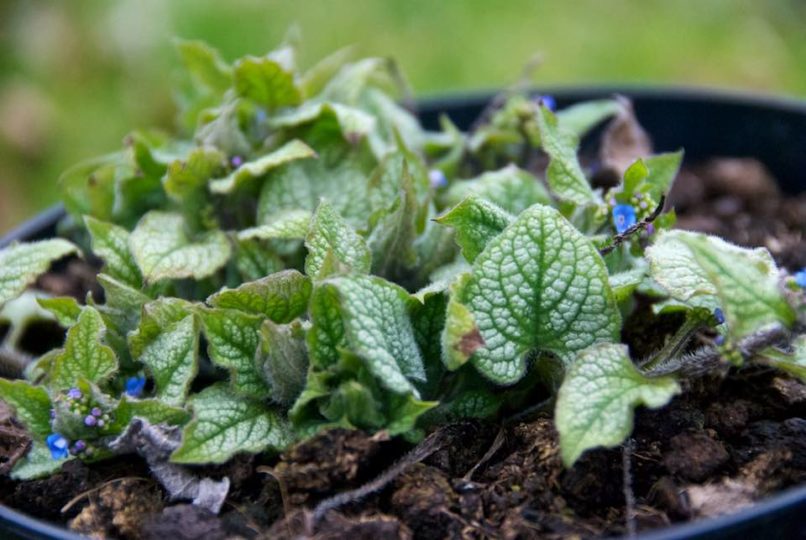
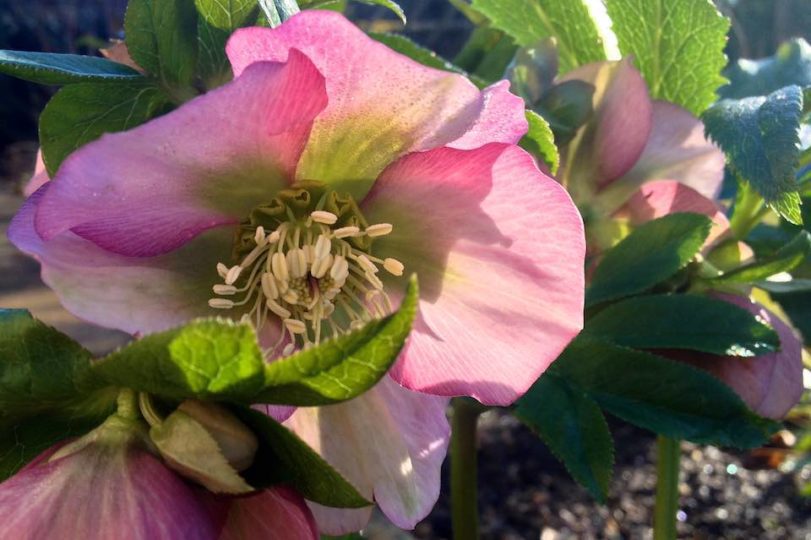

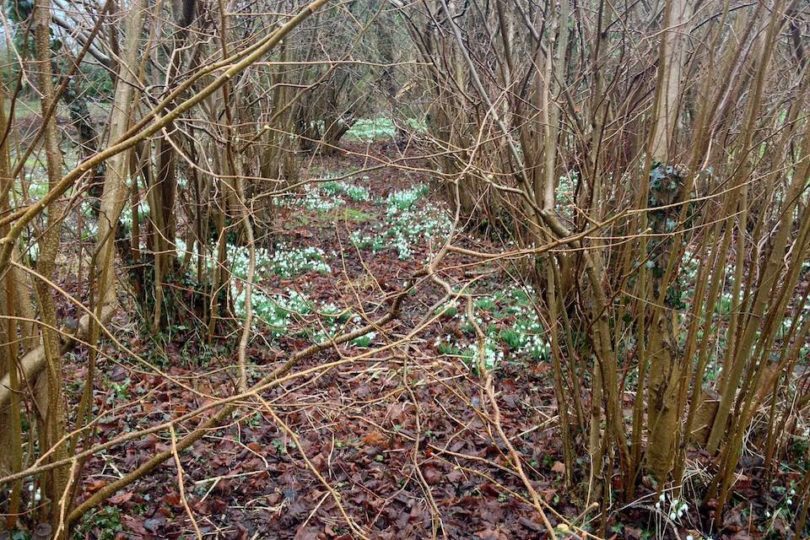

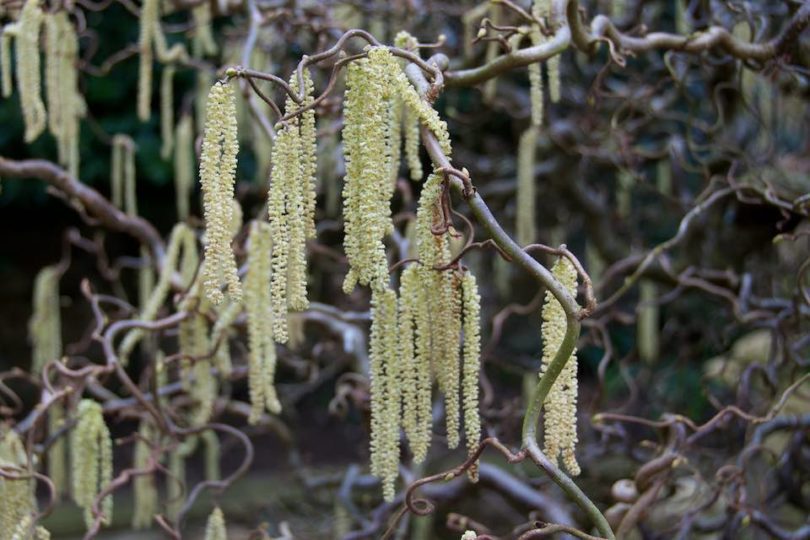

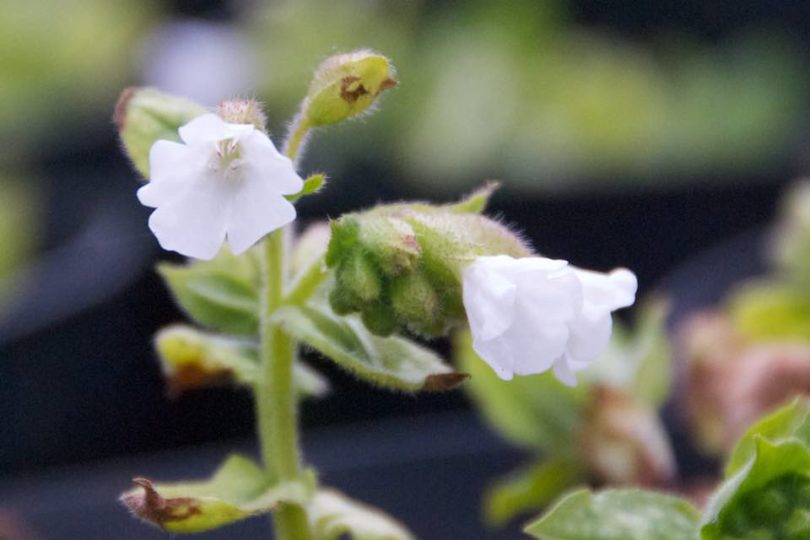
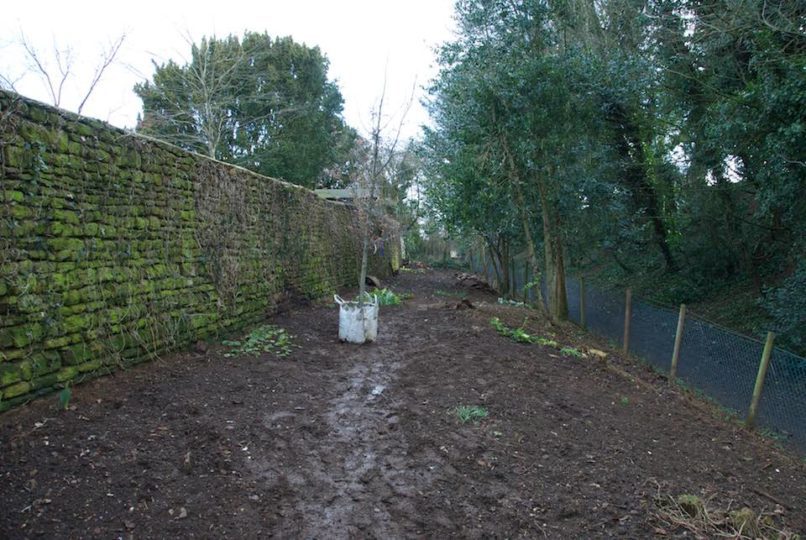
Within the woodland garden, a few trees survived the previous bonfire/garden dump existence, and include; Ilex aquifolium, a battered Crataegus monogyna, a young Taxus baccata and a suspected Fraxinus excelsior. All have now been relieved of mammoth ivy growth, enjoyed a canopy lift, and appreciated a slight prune of dead and diseased branches. They certainly look perkier and recovering nicely. Unfortunately, plant wise, apart from ivy and that vicious vinca minor, no perennials have managed to survive under the discarded rubble. Thankfully a few daffodils and snowdrops have managed to settle on the outskirts, but apart from that, it’s pretty much a blank canvas.
As for the soil, well… the woodland garden is basically planted on a compost heap. Years and years of dare I say, ‘generous mulching’, has resulted in the most luscious of soils, simply sated with humus. Furthermore, as it’s situated below the garden and protected from direct sunlight, there is plenty of moisture. If I was a woodland plant, I’d like to live here….
Mr Robinson said so….
Taking William Robinson’s mantra to heart ‘Never show the naked earth: clothe it‘1, planting has of course started in earnest. The planting has been planned in three stages. First; additional trees for added depth and structure. Secondly, to bring the height of the trees down a little so to speak; the woody understory of smaller trees and bushes, and finally the woodlanders themselves, including perennials, annuals and bulbs.
Trees of green
First in, the trees. There is nothing quite like planting trees. In a recent discussion on twitter, the knowledgeable mr-you-so-want-him-on-your-quiz-team; @simiansuter, put it nicely; ‘It’s the sense of planting for the future, and not just satisfying an ephemeral desire’. Or as I call it – solid gardening.
The trees came from those those bright arbor sparks at Barcham and planted with some added horticultural charm and muscle from Oxford Landscapes. Much needed muscle. You see, as the woodland garden lies behind the garden wall, obscuring but the tallest of trees from the house. The choice therefore was made to, ‘sneak up’ on time, by planting trees of a size so that at least their tops could be seen from the house peaking over the 5ft wall.
Adjacent the woodland garden, the existing garden fortuitously includes several mature trees, not in the least an almighty beech approximately 30+meters in height, but also a few ornamentals, such Acer palmatum Sango Kaku. Not surprisingly, the acer provides wonderful autumn colour and interest throughout the winter by means of its flame red bark. Linking the woodland and existing gardens therefore, additional acers were chosen for their fresh green foliage, which come autumn will show off spectacular colour. The new recruits include; Acer palmatum, Acer buergerianum, Acer x freemanii Autumn Blaze and one of my favourites, a Liquidambar styraciflua.
Next to which, as part of the actual woodland garden, now stands a proud Carpinus betulus – chosen for its sublime lime green foliage, and ability to retain (some) leaves during winter.
The Otter understory
Mimicking the neighbouring rampart and it’s charming hazel understory, seven new hazels have been planted for added textural diversity, shelter and privacy to the garden. Squirrels are abundant, so hazelnuts we shall probably never savour, but as we are planting them, we might as well ensure they’re tasty. Just for the off chance the squirrels miss one.
Connoisseur of tasty produce, monsieur-Taste-the-unexpected, Mark Diacono of Otter Farm, was consulted on suitable varieties and provided some lovely trees. My proud Nutella copse, now consists of; Hall’s Giant, Pearson’s Prolific, Kentish Cob and White Filbert. Fingers crossed the squirrels here are short sighted…..
Eventually, (though the jury is still out on this) when the hazels have matured, a trailer or climber may be introduced to further enliven the woodland such as a honeysuckle, or clematis.
Woodlanders
Not dissimilar to William Robinson’s theory, the woodland garden is to be a wild garden, where the plants must survive and thrive without further care. Granted in the first year, when needed, water will be provided but after that they’re going solo. Plants here will be entrusted with natural freedom, encouraged to grow, thrive and multiply. Planting will therefore be as natural as possible without what Robinson referred to as ‘torturing plants into forms in the garden‘2.
Even if sticking to a native a palette of plants, there are still so many beautiful woodland plants to choose from. I’m sure this list is by no means comprehensive, but to start with;
- Ferns for texture and structure; Dryopteris filix-mas, Polygonatum x hybridum, Asplenium scolopendrium and Polystichum setiferum. Also considering my favourite fern, Osmunda regalis.
- Herbaceous perennials include; Pulmonaria ‘Sissinghurst White, Brunnera macrophylla ‘Jack Frost’, Primula vulgaris, Primula elatior, Primula veris, Helleborus × hybridus, Helleborus argutifolius, Helleborus foetidus, Geranium phaeum album, Myrrhis odorata, Polygonatum × hybridum, Aquilegia vulgaris ‘Munstead White’, Tellima grandiflora and thalictrum. Hopefully, I can entice the abundantly growing Anthriscus sylvestris to settle in the garden too. Then, finally there is the temptation to include hostas. However lovely they are though, and they would look good, at this stage I’m not quite convinced that they are right for a native woodland setting. Though, please don’t hold me to that…
- Annuals – Digitalis purpurea and ‘alba’
- Bulbs – Convallaria majalis, galanthus and inspired by Carol Klein’s daffodil revival piece in the recent Great British Garden Revival series, heritage daffs; (a.o.) Narcissus Geranium, Narcissus Hawera, Narcissus Silver Chimes, Narcissus Thalia, and Narcissus Mrs Langtry. Incidentally, ordered from the Mr Daffodil himself, Ron Scamp.
By no means a comprehensive list. I’m sure after much expert drooling-at-plant-trolleys, at RHS Chelsea this year, whilst planting the very much woodland, M&G garden with the delightful Team Thompson, a few more may added. Just a few, promise…..
- William Robinson, The Wild Garden, Timber Press, London, 2009
- William Robinson, The Wild Garden, Timber Press, London, 2009
